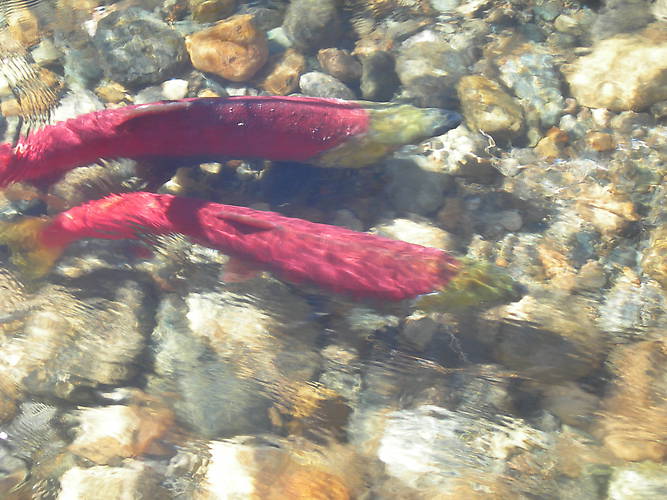Adams River Sockeye Spawning. The final act.
By Bob Scafe; posted October 6, 2010
View Original: Click to zoom, then click to magnify (3072 x 2304) 1235KB

|
This is the uncensored version, and about as close to nature as you can get. The Sockeye hen, or doe, is closest to the camera. She will swim close to the bottom where she will dislodge the large gravel pieces with her tail to loosen the gravel. This will allow her eggs to settle in amongst the gravel. The buck sockeye will then swim slightly upstream of the redd which holds the eggs, and release his milt [sperm] which then fertilizes the eggs. The pair will then move upstream and perform the process repeatedly until the female has exhausted her egg supply . Their duty done, they will remain in the stream, but make no further effort to protect their numerous egg nests [redds] Within a week or so, their bodies will break down, as all the energy in their systems has gone into the spawning . Shortly, these fish will die, and their bodies will either be consumed by bears, hawks and eagles, or they will decay into the water releasing nutrients which will benefit the young Sockeye which will emerge next spring. The young will upon hatching, instinctively swim upstream to a large lake, in this case, Adams Lake, where they will then spend the next 2 years of their life. At age 2 years, the Sockeye smolts at approx 6 inches in length will swim downstream and return to the ocean. They will remain in the ocean for 2 more years, at which point instinct will again assert itself, and the Sockeye salmon, now weighing between 6 and 12 lbs., will return to the stream of it's birth to begin the process anew. |